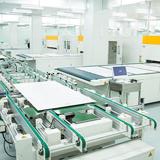

The origin and application of screen printing press
Screen printing, along with ordinary printing, letterpress printing and gravure printing, is known as the four major printing. It originated in China and has a history of more than 2,000 years. After editing and printing, the method of batik was popularized in the late Eastern Han Dynasty.
Screen printing is a printing technology widely used for printing. The general principle of orifice printing is to press the ink through the hole and transfer the ink to the paper or ceramic to be printed. The method is relatively simple. But when it comes to screen printing, in the past, it was mainly a matter of stretching some silk fabric or screen first on the frame, and making a screen printing plate through people's hand-carved paint film or photochemical plate making method.
In modern times, however, it is printed with photosensitive materials, which are then printed by photogrammetry. This kind of printing only needs some simple equipment, the operation is quite convenient, the most important is the process is very simple, the production cost is low, the applicability is very strong, generally used in some oil paintings, personal business cards, magazine covers, trademark brands, and some textiles need printing and dyeing, etc..
However, it should be noted that silkscreen printing, like any other printing, requires a very accurate reproduction of the original text and tone of the image. Of course, in principle, the same as other printing methods, but in some plate making and printing processes, there are some requirements will be different, this is also because of the particularity of screen printing. If you have strong color requirements for platemaking, you can consider using this type of printing, the resulting product will be very thick ink layer, full of three-dimensional sense, and the color will be extremely bright and beautiful.
Tel:15158365810
HTML:www.mysyqc.com
Add:No.185, bridge 3 road, xiaoqiaotou village, qiaotou town, cixi city